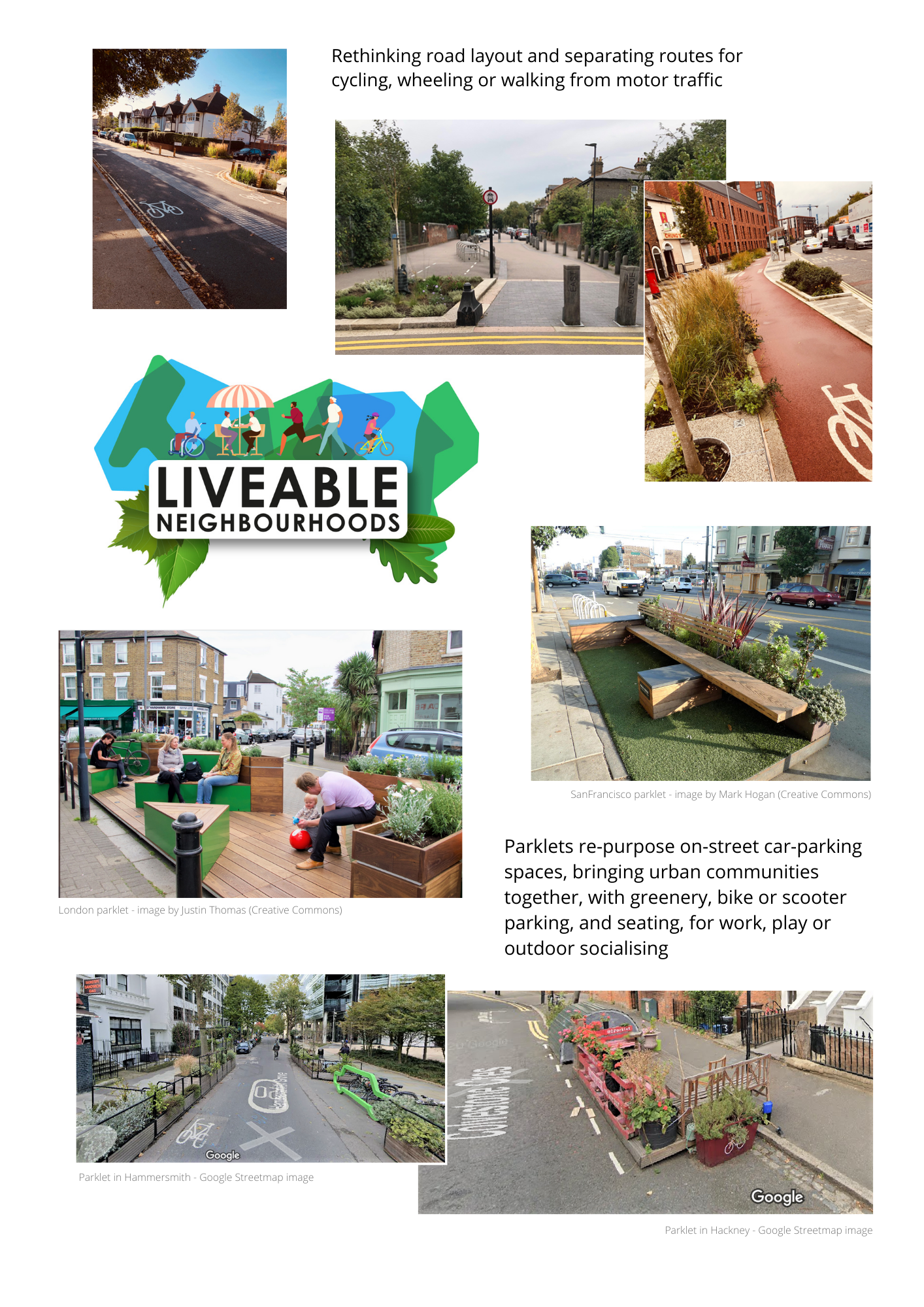Residential areas in cities and towns are often used by through-traffic, which creates noise, pollution and hazards. By reducing the dominance of vehicles, Liveable Neighbourhoods will reconsider how street space is reallocated, creating healthier outdoor spaces for everyone to share, as well as vibrant places where people want to dwell and spend money.
The benefits of Liveable Neighbourhoods
With the help of insights from the local community, we want to determine what is good about an area, and what could be improved. We expect this will lead us to a variety of different schemes in different places, during the first phase of the project. All, however, will be united by aiming to deliver a better quality of life, in cost-effective ways, resulting in benefits like these:
For communities
- Closer communities, supported by quieter, safer streets
- More attractive and accessible shared public spaces
- Encouragement to socialise and shop more locally
For road users
- Fairer access to street space for all users
- Fewer people relying on private cars or vehicles to get around
- A reduction in on-street non-residential parking, to make way for EV (electric vehicle) charging, car clubs, social spaces and improved walking and cycling routes
For residents
- Improved health and wellbeing, through increased physical activity
- Reduced rat-running, speeding and inappropriate use of HGVs on residential roads
- Better walking and cycling infrastructure, with more people walking or cycling their short journeys
- Improved accessibility for those with visual and/or mobility impairments, providing safer and more pleasant places for everyone to get around
For families
- Dedicated routes supporting walking and cycling for common short journeys, such as between home and school
- Better access to safe outdoor public space, encouraging active play
- Improved air quality and less noise, leading to better public health
For businesses
- Better air quality and less noise pollution on commercial streets, offering more opportunity for street-side dining, trading and cafe culture
- More focus on the identity of local high streets and businesses
- Less dependence on car parking provision for your customers
Rebalancing how we use our roads
There is a range of measures we can explore and use to help reduce the impact of motor vehicles and encourage the use of other modes of travel, to create more Liveable Neighbourhoods. These will depend on the issues identified in each area, and how severely they affect people's quality of life. The following are typical examples.
-
Reducing the impact of traffic
- We can make some residential and commercial streets cleaner and quieter by restricting access to motor vehicles, where appropriate. Where popular routes pass through residential areas, we can reduce driving speeds and improve safety for those being active, by introducing traffic calming measures, or changing the design of road junctions and crossings.
-
Reducing the impact of car parking
- We can introduce residents' parking zones in areas where the roads are overwhelmed with commuter parking. Restricting non-residential on-street parking will encourage commuters to use our Park & Ride and local bus services. This in turn will alleviate congestion, improve journey times and reduce emissions produced by motor vehicles.
- We can use road space reclaimed from moving and parked vehicles to improve facilities for people, especially those with impaired visibility and/or mobility. We will be aiming to provide better walking, wheeling and cycling links between homes, schools and commercial areas, along with the installation of well-lit cycle storage. We are also planning a pilot scheme to install on-street bike lockers, for people living in accommodation which doesn't have suitable cycle storage.
See Liveable Neighbourhoods in action
Typical new features
Typical features of a Liveable Neighbourhood include improved routes for walking, wheeling and cycling, traffic restrictions to avoid rat-running and parklets: reclaimed car parking spaces for community use.

View Hackney's Parklet Cycle Route map
The impact on the whole community
For first-hand views on a dramatically improved quality of life, view this short video about how the London Borough of Waltham Forest created a Liveable Neighbourhood
